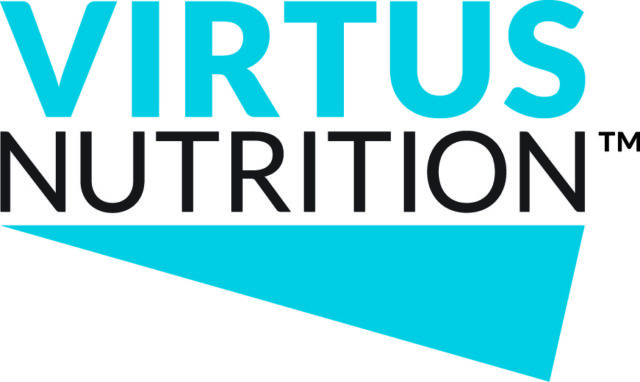As we head into winter, safeguarding teat condition becomes an important issue. Because colder, windier, and in some areas, rainier weather, all contribute to teat condition problems, maintaining teat condition becomes a year-round effort.
Besides being a nuisance and potential safety issue for milkers, poor teat condition is a risk factor for mastitis. The two main conditions typically seen are poor teat skin condition, resulting in chapping and cracking of the teat skin, and hyperkeratosis, an overgrowth of the normal tissue of the teat end that has a cauliflower or finger-like projection appearance.
Chapped skin allows colonization of Staph. aureus, a contagious mastitis-causing organism. Rough, cracked teat ends are associated with an increase in mastitis infection rates as well. Poor teat condition can be caused by a variety of factors including environmental (sun, wind, cold temperatures, dry air, wet conditions or sudden changes in weather), chemicals, milking routine, milking equipment and infectious agents such as viruses.
Have you flipped up a teat today? An important aspect to managing teat condition is monitoring it. How is the teat condition in your herd? Have you looked lately? According to University of Minnesota Emeritus – Veterinary Population Medicine, Dr. Ralph Farnsworth, many people don’t look closely at teats until cows are kicking off milking units or scabs are hindering milkout. Establishing a baseline is helpful in knowing when a problem is really a problem.
“It’s important to look beyond the hospital pen to get an overall appraisal,” Dr. Farnsworth stresses. Dr. Leo Timms, Associate Professor at Iowa State University adds, “I think we’ve made great strides in defining what a normal teat looks like as well as what a normal herd looks like.”
He explains that teat ends scoring a 1 or 2 (1=no ring, 2=smooth raised ring) are normal.
“Though we don’t like 3’s (rough raised ring) and 4’s (very rough raised ring), we know that a certain number of cows with these higher scores is ‘normal’ because pointed and funnel- shaped teats will have some degree of hyperkeratosis despite everything we do. That’s why it’s so important to manage that risk by making sure all mastitis prevention practices are in place,” Timms adds. He estimates that most herds have from 5 to 15 percent of cows with pointed teats.
Dr. Andy Johnson, Herd Health and Wellness Veterinarian for Grande Cheese Company, recommends striving for at least 85 percent of the herd with scores of 1 or 2.
“That smooth ring (score of 2) is really a callous, just like we get from working. We see them on cows milked by hand as well as on beef cows,” he says.
Dr. Johnson suggests checking teat ends once a quarter, more frequently in herds having trouble. Though some problems arise in a matter of days (weather-related challenges), others take time (most equipment and procedural effects).
“Look at fresh cows, high producers, low producers and cows that are six weeks, three months and six months into their lactations. Cows in early lactation and older cows are more likely to have hyperkeratosis,” he adds.
A representative sample is a minimum of 80 cows or 20 percent of the herd, whichever is larger. Along with monitoring teat condition, follow these tips for maintaining good teat condition:
• Employ careful pre-milking prep. Teat skin contains mild, natural acids that help create an acid mantel. This mantel helps draw water to the surface of the skin, while the acids inhibit bacterial growth. The skin is more prone to colonization by pathogens when excessive washing removes the mantel and basic (high pH) compounds neutralize it. Loss of skin moisture results in chapping.
• Minimize low flow rates and unit-on time. The degree of hyperkeratosis is directly correlated with milking duration, especially the length of time teats are exposed to low flow, which is defined as less than one kilogram (2.2 pounds) per minute milk flow rate. Good premilking prep (10 to 12 seconds manual stimulation) and proper prep-lag times (60 to 90 seconds from start of prep to unit attachment) along with appropriate automatic detacher settings will minimize low flow rates and unit-on time.
• Fine-tune and optimize equipment. Dr. Timms explains, “The effect of minor equipment problems will be amplified once the skin is cracked. It’s like tapping your finger on a table – not a problem when your fingertip is healthy, but once it’s cracked, you know how painful that can be.”
• Minimize weather effects. Provide adequate shade to prevent sunburn, windbreaks to eliminate wind chill and extra bedding to prevent freezing while lying in stalls. Keep stalls dry and prevent access to mud to avoid its drying effect on teat skin.
• Use a quality teat dip. Dips with effective germicides and 5 to 10 percent skin conditioners will help keep skin healthy. Be sure to cover the entire teat. High-emollient dips designed for harsh conditions should have proof of effectively controlling mastitis pathogens.
• Dip and blot During extremely cold weather, resist the temptation to stop dipping altogether. Due to the milk film that remains after the milking unit is removed, undipped teats will be wet whether they are dipped or not. Teats should be dried before exposure to cold temperatures. To avoid the spread of contagious organisms, it is best to dip teats, allow 20 to 30 seconds contact time and blot dry. An alternative to dipping and blotting would be to use a winter teat dip.
• Prevent dips from freezing. Thoroughly mix dip in storage containers before refilling dip cups to prevent irritation that could result from dip that has stratified.
• Ensure good nutrition. Dr. Timms emphasizes, “Nutrition plays an immense role in skin health, both in maintaining skin integrity and in healing.”
• Control flies and edema, and avoid sharp objects. Minimize flies and edema, which contribute to skin cracking. Keep cows away from sharp grasses and remove debris such as barbed wire from cattle yards.
What to do when teat condition is a problem
Dr. Johnson stated, “I used to not receive many calls about teat end condition. Today 80 percent of the calls I get include concerns about teat condition. I think it’s because there’s more awareness of teat health. Plus, a greater push for parlor efficiency has caused some dairy producers to speed milking by raising vacuum levels or cutting corners in their milking routine. Cows pay a high price for this. Some people are so used to seeing rough teat ends that they accept them as normal. An excessive number of rough teat ends should send a clear message that something’s not right.”
If more than 20 percent of the cows evaluated have a teat scoring 3 or 4, there’s a teat condition problem.
Suggestions from the experts:
• Investigate further
When teat condition deteriorates, the first impulse is to change something, such as the post-milking teat dip or inflation style. Again, it is important to evaluate a representative portion of the herd to determine if the problem is indeed a problem. Dr. Timms notes that if the majority of the cows in the hospital pen are scores 3 and 4, people are quick to assume there is a herd problem with teat condition.
“It might be guilty by association, especially if teats were already bad before the mastitis outbreak,” he says. “Yes, if there’s a breakdown somewhere else in mastitis prevention, these cows are likely the first to show up in the hospital pen. That’s why it’s important to have a baseline so you can, first, determine if there is a problem. Then second, define the problem population (specific lot or pen, certain teats or part of udder, some or all cows, etc.) to help pinpoint the cause.”
• Use a product that will expedite healing.
Johnson explains, “The worst thing you can do is use salves. You’ll set yourself up for explosive infections. For herds with hyperkeratosis, I recommend a chlorine dioxide pre- and post-dip. I’ve seen it help hundreds of cases. Many dairymen call within two weeks saying they can’t believe the difference. This class of dip appears to do a better job of softening the keratin on teat ends than other dips.”
• Ensure excellent milking hygiene
Teat lesions are readily colonized by bacteria. Udder cloths, milkers’ hands and milking machines, which facilitate transfer of infectious organisms quarter-to-quarter and cow-to-cow, should be sanitary.
• Re-evaluate and optimize milking equipment and procedures
Minimize the amount of time cows are in a low flow/high vacuum condition. Do not lower the vacuum level unless it is warranted, as this extends the milking time, negatively affecting teat ends. PD
—Excerpts from ABS Technical Services Global Newsletter, January 2009
--Edited by PD staff




